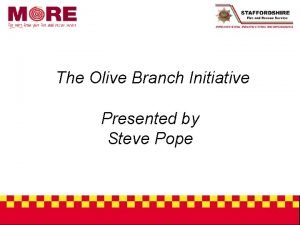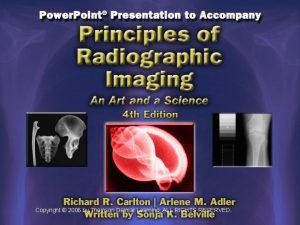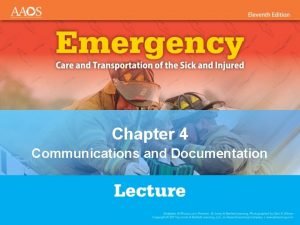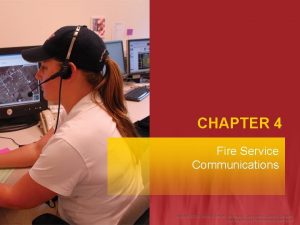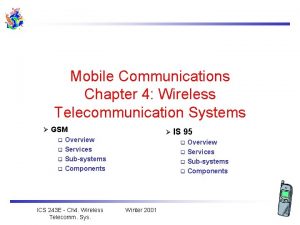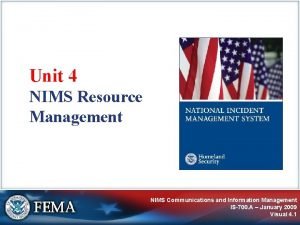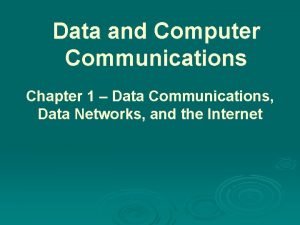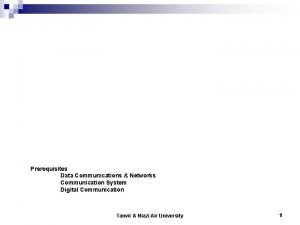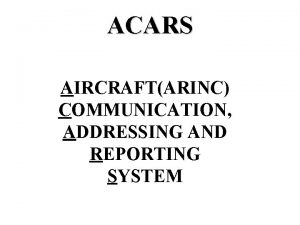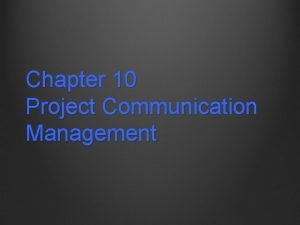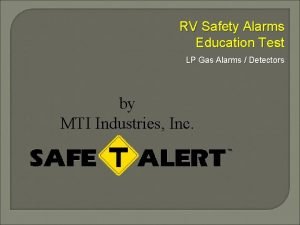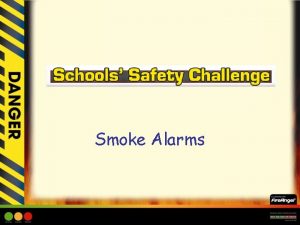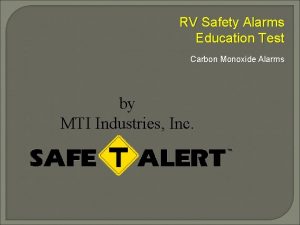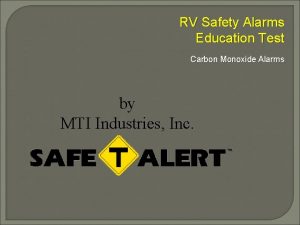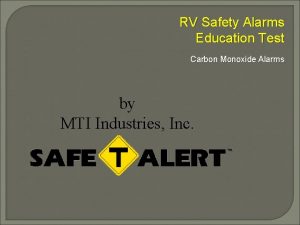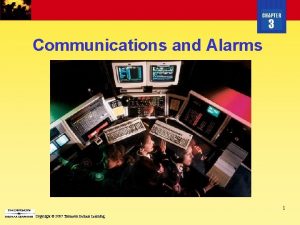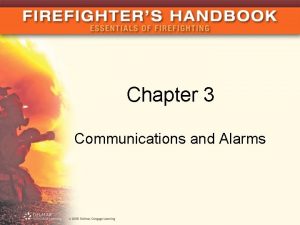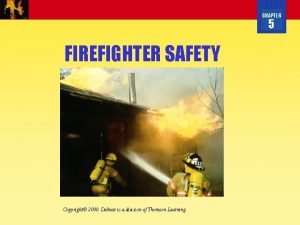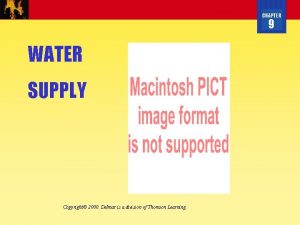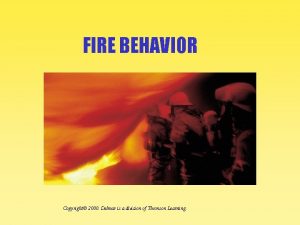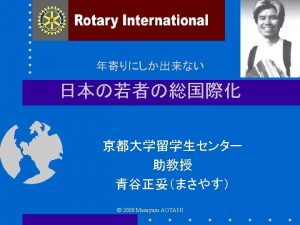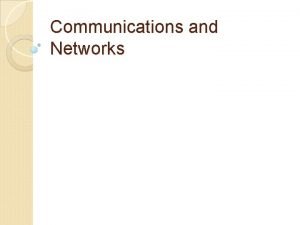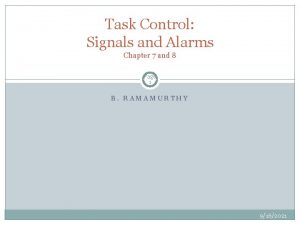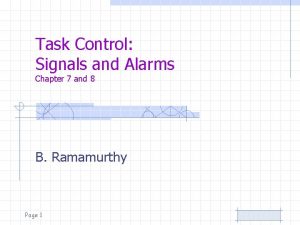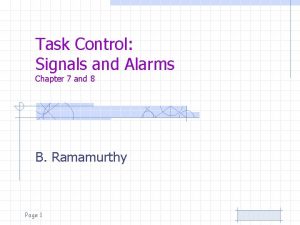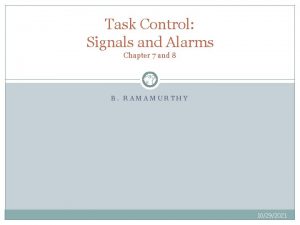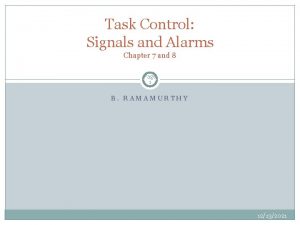CHAPTER COMMUNICATIONS AND ALARMS Copyright 2000 Delmar is




































- Slides: 36

CHAPTER COMMUNICATIONS AND ALARMS Copyright© 2000. Delmar is a division of Thomson Learning. 3

CHAPTER 3 Objectives 1 of 2 • Demonstrate the proper method of answering a nonemergency administrative call. • Demonstrate the method of answering an emergency call and obtaining information, and relaying it to the communications center.

CHAPTER 3 Objectives 2 of 2 • Demonstrate the proper method of operating a mobile radio. • Demonstrate the proper method of operating a portable radio. • Complete a basic incident report.

CHAPTER 3 Introduction 1 of 2 • Fire service communications is an important role of the fire service. • Telecommunicators must communicate with citizens and relay information to first responders. • Communications have a great impact on the delivery of service.

CHAPTER 3 Introduction • Communication process must be complete and understood to be effective. Leaders are taking proactive measures to ensure quality.

CHAPTER 3 Communications Personnel 1 of 3 • Basic role of communications has not changed over time. • Telecommunicator is responsible for: • receiving calls. • evaluating response need. • initiating appropriate response.

CHAPTER 3 Communications Personnel 2 of 3 • Telecommunicators may remain on the line with caller and provide prearrival instructions. • NFPA 1061 - Standard for Professional Qualifications for Public Safety Telecommunicators. • Detailed work performance evaluation program must follow training programs.

CHAPTER 3 Communications Personnel 3 of 3 • Communication managers rely on historical data to produce staffing models and requirements. • Fire departments must provide well-trained personnel to serve as telecommunicators. • These individuals have a direct impact on the overall response time of the agency.

CHAPTER 3 The Communications Facility

CHAPTER 3 Communications Facility 1 of 2 • Dispatch centers range in size and staffing. • All serve common goal of receiving and delivering information. • NFPA 1221 - Standard on location and construction of communication centers. • All communication centers should have a backup in place.

CHAPTER 3 Communications Facility 2 of 2 • New technology in hardware and software has allowed incorporation of computers. • Computer-aided dispatch systems • Computer can track location and status of incidents and vehicles.

CHAPTER 3 Receiving Reports of Emergencies • Call-taking process consists of : • Receiving a report. • Interviewing. • Referral or dispatch. • Telecommunicators must able to: • Prioritize incoming calls. • Answer incoming lines promptly. • Control the conversation. 1 of 3

CHAPTER 3 Receiving Reports of Emergencies 2 of 3 • The following information must be obtained: • Location of emergency. • Nature of the emergency. • Callback number. • Caller’s location and situation.

CHAPTER 3 Receiving Reports of Emergencies 3 of 3 • Call taker must ask the right questions to generate proper responses. • Many departments use emergency medical dispatch protocols for dealing with EMS calls.

CHAPTER 3 Call Process

CHAPTER Methods of Receiving Reports of Emergencies 1 of 3 • Reports of emergencies can be received in various ways. • Telephone is the most common means. • 93% of the population in the US have 911 access. • 95% of the 93% have enhanced 911. • Geographically 50% of nation has 911. 3

CHAPTER Methods of Receiving Reports of Emergencies 2 of 3 • Enhanced 911 provides telephone numbers and addresses of call origins. • Cellular phone becoming very common. • By 2000, cellular phones must be able to provide means to determine caller location. 3

CHAPTER Methods of Receiving Reports of Emergencies 3 of 3 • Municipal fire alarms allow a coded or voice message to be generated from an alarm box. • Alarm boxes located in areas of easy access and visibility. • This system began near the turn of the century. • Commonly referred to as call boxes. 3

CHAPTER 3 Call Boxes

CHAPTER Methods of Receiving Reports of Emergencies 3 • Automatic alarm systems are another means to notify communications. • Two types of alarm systems defined by NFPA. • Type A receives alarm from a fire alarm box and retransmits to a fire station manually or automatically. • Type B automatically sends alarm.

CHAPTER 3 Type A Municipal Alarm

CHAPTER 3 Type B Municipal Alarm

CHAPTER 3 Reports via TDD • ADA entitles citizens to equal service. • Communications need to receive calls from specialized equipment. • Keyboard uses text messages rather than voices.

CHAPTER 3 Walk-Up Alarms • Report of an emergency may be received at fire station. • Firefighter must obtain information. • Communication center must be notified.

CHAPTER 3 Emergency Services Deployment 1 of 2 • Once an emergency is reported, action must be taken. • Most response organizations have a preassigned standard response. • Communication centers have deployment plans. • Deployment based on apparatus, equipment, and personnel available.

CHAPTER 3 Emergency Services Deployment 2 of 2 • Deployment may be done manually or through computers. • Next step is to notify responders. • Several methods exist. • Some departments use mobile data terminals.

CHAPTER 3 Notification Systems

CHAPTER 3 Mobile Data Terminal • Computers mounted in apparatus. • Dispatch information displayed on screen. • Units can communicate with dispatch by pushing buttons.

CHAPTER 3 Traffic Control Systems • Some jurisdictions use emergency preemption systems to control traffic signals. • They provide a safe transition to a priority right-ofway for emergency vehicles. • System designed to recognize emergency vehicle and change traffic control signal.

CHAPTER 3 Radio Systems and Procedures 1 of 2 • Radio system is primary link between field units and communications center. • Radio frequencies commonly used by the fire service are: • VHF low band. • VHF high band. • UHF.

CHAPTER 3 Radio Systems and Procedures 2 of 2 • FCC monitors frequencies. • 800 Mhz range frequencies have also been allocated. • All personnel must be able to talk properly over the radio. • A clear and concise message is important. • Some departments use “ 10 -codes” while others use clear speech.

CHAPTER 3 Proper Use of Radio

CHAPTER 3 Arrival Reports • First arriving unit establishes command provides initial report. • Command can be transferred as needed. • Status reports should be given regularly during large incidents. • Some SOPs call for “time marking ” incidents at regular intervals.

CHAPTER 3 Mobile Support Vehicles In large incidents a mobile communications center may be used to support an incident.

CHAPTER 3 Records • Proper documentation and record keeping must be maintained for all responses. • Telephone and radio traffic may be kept in manual log book or recording device. • Fire reports are considered public records. • Most states have minimum data that must be recorded and maintained.

CHAPTER 3 Recording Devices
 Fire alarms olive branch
Fire alarms olive branch Vision alarms
Vision alarms 2009 delmar cengage learning
2009 delmar cengage learning 2009 delmar cengage learning
2009 delmar cengage learning Learning exercises chapter 1 medical terminology
Learning exercises chapter 1 medical terminology Graphing tpr
Graphing tpr Delmar isotonic
Delmar isotonic Delmar tsi
Delmar tsi Delmar custom broker
Delmar custom broker Thomson delmar learning
Thomson delmar learning Chapter 6 the skeletal system answer key
Chapter 6 the skeletal system answer key Chapter 13 medical math assignment sheet
Chapter 13 medical math assignment sheet Chapter 10 cultural diversity
Chapter 10 cultural diversity Delmar larsen
Delmar larsen Delmar cengage learning instructor resources
Delmar cengage learning instructor resources Chapter 4 communications and documentation quiz
Chapter 4 communications and documentation quiz Chapter 3 network protocols and communications
Chapter 3 network protocols and communications A fire department communication center functions
A fire department communication center functions Communications chapter
Communications chapter Nims communications and information management
Nims communications and information management Data communication components
Data communication components Ministry of transport, communications and works
Ministry of transport, communications and works Global marketing communications
Global marketing communications Data and computer communications 10th edition
Data and computer communications 10th edition Data and computer communications
Data and computer communications Business data communications and networking
Business data communications and networking Business data communications and networking
Business data communications and networking Amplified expressiveness
Amplified expressiveness Digital communications and networks impact factor
Digital communications and networks impact factor K state communications and marketing
K state communications and marketing Data and computer communications
Data and computer communications Business communications process and product
Business communications process and product Business communications process and product
Business communications process and product Aircraft communication addressing and reporting system
Aircraft communication addressing and reporting system Introduction to data communications and networking
Introduction to data communications and networking Designing and managing integrated marketing communications
Designing and managing integrated marketing communications Monitor communications process tools and techniques
Monitor communications process tools and techniques
